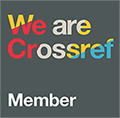Küçük Çocukların Ev Aritmetik Ortamlarının İncelenmesi
DOI:
https://doi.org/10.33308/26674874.2024381705Anahtar Kelimeler:
Ev Aritmetik Ortamı- Evin Matematik Ortamı- Ev Öğrenme Ortamı- Erken Matematik EğitimiÖzet
Ev ortamları, çocukların hayatta kalma ve gelişmesinde kilit bir rol oynamaktadır. Bu sebeple çocukların okul dışındaki yaşamlarının büyük çoğunluğunu geçirdikleri evin, aritmetik ortamının bilinmesi ve çocukların matematik becerilerinin geliştirilmesine yönelik düzenlenmesi oldukça önemlidir. Küçük çocukların ev aritmetik ortamlarının değerlendirilmesi amacıyla uygun örnekleme yönteminin kullanıldığı bu araştırmada, kesitsel tarama modeli kullanılmıştır. Bu amaçla, ev aritmetik ortamını belirlemek için bir ölçme aracının Türk Kültürüne ve Türkçe diline uyarlanması yapılarak bu ölçme aracından elde edilen puanların geçerlik ve güvenlikleri hesaplanmıştır. Ayrıca ölçme aracından elde edilen toplam puanlar ile bağımsız değişkenler arasında ilişki olup olmadığının araştırılması için hiyerarşik regresyon analizi yapılmıştır. Faktör analizi, “Ev Aritmetik Ortamı Tarama Aracı (EAOTA)”nın tek faktörlü bir yapı oluşturduğunu göstermiştir. Ölçekten elde edilen puanların ise güvenilir sonuçlar verdiğini sonucuna ulaşılmıştır (α:.72). Hiyerarşik regresyon analizi sonuçları; yaş, çocuğun kendi odasının olması, sosyo-ekonomik düzeyin, EAOTA toplam puanlarındaki varyansın önemli bir açıklayıcısı olduğunu işaret etmiştir (p<.05).
İndirmeler
Referanslar
Ammar, D., Acevedo, G.A., & Cordova, A. (2013). Affordances in the home environment for motor development: A cross-cultural study between American and Lebanese children. Child Development Research, Article ID 152094, 1-5. DOI: https://doi.org/10.1155/2013/152094
Anders, Y., Rossbach, H. G., Weinert, S., Ebert, S., Kuger, S., Lehrl, S., & Von Maurice, J. (2012). Home and preschool learning environments and their relations to the development of early numeracy skills. Early Childhood Research Quarterly, 27(2), 231-244. DOI: https://doi.org/10.1016/j.ecresq.2011.08.003
Baroody, A. J., & Lai, M. (2007). Preschoolers’ understanding of the addition–subtraction inverse principle: A Taiwanese sample. Mathematical Thinking and Learning, 9(2), 131-171. DOI: https://doi.org/10.1080/10986060709336813
Baroody, A. J., Lai, M. L., Li, X., & Baroody, A. E. (2009). Preschoolers’ understanding of subtraction-related principles. Mathematical Thinking and Learning, 11(1-2), 41-60. DOI: https://doi.org/10.1080/10986060802583956
Baroody, A., & Tiilikainen, S. (2003). Two perspectives on addition development. In A. Baroody & A. Dowker (Eds.) The development of arithmetic concepts and skills: Constructing adaptive expertise (pp.75–125). Lawrence Erlbaum Associates Publishers.
Basto, M., & Pereira, J. M. (2012). An SPSS-R menu for ordinal factor analysis. Journal of Statistical Software, 46(4), 1-29. DOI: https://doi.org/10.18637/jss.v046.i04
Bekman, S. (2004). Early home intervention to promote school readiness: A Turkish experience. NHSA Dialog: A Research-to-Practice Journal for the Early Intervention Field, 7(1), 16-34. DOI: https://doi.org/10.1207/s19309325nhsa0701_4
Biedinger, N. (2011). The influence of education and home environment on the cognitive outcomes of preschool children in Germany. Child Development Research, 916303. DOI: https://doi.org/10.1155/2011/916303
Borsa, J. C., Damásio, B. F., & Bandeira, D. R. (2012). Cross-cultural adaptation and validation of psychological instruments: Some considerations. Paidéia (Ribeirão Preto), 22, 423-432. DOI: https://doi.org/10.1590/S0103-863X2012000300014
Büyüköztürk, Ş., Çakmak-Kılıç, E., Akgün-Erkan, Ö., Karadeniz, Ş., & Demirel, F. (2012). Bilimsel araştırma yöntemleri. Pegem Akademi.
Cahoon, A., Cassidy, T., & Simms, V. (2017). Parents' views and experiences of the informal and formal home numeracy environment. Learning, Culture and Social Interaction, 15, 69-79. DOI: https://doi.org/10.1016/j.lcsi.2017.08.002
Creswell, J. W. (2017). Research design-Qualitative, quantitative, and mixed methods approaches. Sage publications.
Cross, C. T., Woods, T. A., & Schweingruber, H. E. (2009). Mathematics learning in early childhood: Paths toward excellence and equity. National Academies Press.
Dearing, E., McCartney, K., & Taylor, B. A. (2009). Does higher quality early child care promote low‐income children’s math and reading achievement in middle childhood? Child Development, 80(5), 1329-1349. DOI: https://doi.org/10.1111/j.1467-8624.2009.01336.x
Develi, M.H., & Orbay, K. (2002, Eylül, 16-18). İşlem öncesi dönem çocuklarında sayı kavramının gelişimi üzerine. V. Ulusal Fen Bilimleri ve Matematik Kongresi. Orta Doğu Teknik Üniversitesi, Ankara. https://shorturl.at/zFS28
Duncan, G.J., Ziol-Guest, K.M., & Kalil, A. (2010). Early-childhood poverty and adult attainment, behavior, and health. Child Development, 81(1), 306-25. DOI: https://doi.org/10.1111/j.1467-8624.2009.01396.x
Eccles, J. S., Arberton, A., Buchanan, C. M., Janis, J., Flanagan, C., Harold, R., … Reuman, D. (1993). School and family effects on the ontogeny of children’s interests, self-perceptions, and activity choices. In J. E. Jacobs, & R. M. Ryan (Eds.) Nebraska Symposium on Motivation, 1992: Developmental perspectives on motivation (pp.145–208). University of Nebraska Press.
Ertürk-Kara, H.G. (2019). Okul öncesi dönemde çocuğa evde sunulan desteğin okuma yazmaya hazırlık ve matematik becerileri bağlamında incelenmesi. Bayburt Eğitim Fakültesi Dergisi, 14(27), 87-105. DOI: https://doi.org/10.35675/befdergi.422261
Foy, J. G., & Mann, V. (2003). Home literacy environment and phonological awareness in preschool children: Differential effects for rhyme and phoneme awareness. Applied Psycholinguistics, 24(1), 59-88. DOI: https://doi.org/10.1017/S0142716403000043
Grieve, K.W., & Richter, L.M. (1990). A factor analytic study of the Home Screening Questionnaire for infants. South African Journal of Psychology, 20(4), 277-281. DOI: https://doi.org/10.1177/008124639002000407
Gunderson, E. A., & Levine, S. C. (2011). Some types of parent number talk count more than others: relations between parents’ input and children’s cardinal‐number knowledge. Developmental Science, 14(5), 1021-1032. DOI: https://doi.org/10.1111/j.1467-7687.2011.01050.x
Haktanır, H. (2021). Okul öncesi dönemde matematik ve okuma yazmaya hazırlık becerilerinin evde desteklenme düzeyinin incelenmesi [Yayınlanmamış yüksek lisans tezi]. Pamukkale Üniversitesi.
Hanner, E., Braham, E. J., Elliott, L., & Libertus, M. E. (2019). Promoting math talk in adult–child interactions through grocery store signs. Mind, Brain, and Education, 13(2), 110-118. DOI: https://doi.org/10.1111/mbe.12195
Huntsinger, C. S., Jose, P. E., & Luo, Z. (2016). Parental facilitation of early mathematics and reading skills and knowledge through encouragement of home-based activities. Early Childhood Research Quarterly, 37, 1-15. DOI: https://doi.org/10.1016/j.ecresq.2016.02.005
Johnson, R. B., & Christensen, L. (2019). Educational research: Quantitative, qualitative, and mixed approaches. Sage Publications.
King, Y. A., & Purpura, D. J. (2021). Direct numeracy activities and early math skills: Math language as a mediator. Early Childhood Research Quarterly, 54, 252-259. DOI: https://doi.org/10.1016/j.ecresq.2020.09.012
Kleemans, T., Peeters, M., Segers, E., & Verhoeven, L. (2012). Child and home predictors of early numeracy skills in kindergarten. Early Childhood Research Quarterly, 27(3), 471-477. DOI: https://doi.org/10.1016/j.ecresq.2011.12.004
Kluczniok, K., Lehrl, S., Kuger, S., & Rossbach, H. G. (2013). Quality of the home learning environment during preschool age–Domains and contextual conditions. European Early Childhood Education Research Journal, 21(3), 420-438. DOI: https://doi.org/10.1080/1350293X.2013.814356
Laski, E. V., & Siegler, R. S. (2007). Is 27 a big number? Correlational and causal connections among numerical categorization, number line estimation, and numerical magnitude comparison. Child Development, 78(6), 1723-1743. DOI: https://doi.org/10.1111/j.1467-8624.2007.01087.x
LeFevre, J. A., Skwarchuk, S. L., Smith-Chant, B. L., Fast, L., Kamawar, D., & Bisanz, J. (2009). Home numeracy experiences and children’s math performance in the early school years. Canadian Journal of Behavioural Science/Revue - canadienne des sciences du comportement, 41(2), 55-66. DOI: https://doi.org/10.1037/a0014532
Letourneau, N. L., Duffett-Leger, L., Levac, L., Watson, B. & Young-Morris, C. (2011). Socioeconomic status and child development: A meta-analysis. Journal of Emotional and Behavioral Disorders, 20(10) 1-14.
Manolitsis, G., Georgiou, G. K., & Tziraki, N. (2013). Examining the effects of home literacy and numeracy environment on early reading and math acquisition. Early Childhood Research Quarterly, 28(4), 692-703. DOI: https://doi.org/10.1016/j.ecresq.2013.05.004
Melhuish, E. C., Sylva, K., Sammons, P., Siraj-Blatchford, I., Taggart, B., Phan, M., & Malin, A. (2008). Preschool influences on mathematics achievement. Science, 321, 1161-1162. DOI: https://doi.org/10.1126/science.1158808
Napoli, A. R., & Purpura, D. J. (2018). The home literacy and numeracy environment in preschool: Cross-domain relations of parent–child practices and child outcomes. Journal of Experimental Child Psychology, 166, 581-603. DOI: https://doi.org/10.1016/j.jecp.2017.10.002
Niklas, F., & Schneider, W. (2013). Casting the die before the die is cast: The importance of the home numeracy environment for preschool children. European Journal of Psychology of Education, 29(3), 327–345.
Niklas, F., & Schneider, W. (2014). Casting the die before the die is cast: The importance of the home numeracy environment for preschool children. European Journal of Psychology of Education, 29(3), 327-345. DOI: https://doi.org/10.1007/s10212-013-0201-6
Niklas, F., Cohrssen, C., & Tayler, C. (2016). Improving preschoolers’ numerical abilities by enhancing the home numeracy environment. Early Education and Development, 27(3), 372-383. DOI: https://doi.org/10.1080/10409289.2015.1076676
Niklas, F., Cohrssen, C., & Tayler, C. (2018). Making a difference to children’s reasoning skills before school entry: The contribution of the home learning environment. Contemporary Educational Psychology. 54 (July), 79-88. DOI: https://doi.org/10.1016/j.cedpsych.2018.06.001
Oğul, İ. G., & Arnas, Y. A. (2022). Understanding home math environments and math talks of children with low and middle socioeconomic status. Participatory Educational Research, 9(4), 53-70. DOI: https://doi.org/10.17275/per.22.79.9.4
Olkun, S., Fidan, E., & Özer, A. B. (2013). 5-7 yaş aralığındaki çocuklarda sayı kavramının gelişimi ve saymanın problem çözmede kullanımı. Eğitim ve Bilim, 38(169), 236-248.
Parker, F. L., Boak, A. Y., Griffin, K. W., Ripple, C., & Peay, L. (1999). Parent-child relationship, home learning environment, and school readiness. School Psychology Review, 28(3), 413-425. DOI: https://doi.org/10.1080/02796015.1999.12085974
Pungello, E. P., Kuperschmidt, J. B., Burchinal, M. R. & Patterson, C. (1996). Environmental risk factors and children’s achievement from middle childhood to adolescence. Developmental Psychology, 32, 755–767. DOI: https://doi.org/10.1037//0012-1649.32.4.755
Purpura, D. J., & Reid, E. E. (2016). Mathematics and language: Individual and group differences in mathematical language skills in young children. Early Childhood Research Quarterly, 36, 259-268. DOI: https://doi.org/10.1016/j.ecresq.2015.12.020
R Development Core Team. (2012). R: A language and environment for statistical computing. http://www.r-project.org/
Ramani, G. B., Rowe, M. L., Eason, S. H., & Leech, K. A. (2015). Math talk during informal learning activities in Head Start families. Cognitive Development, 35, 15-33. DOI: https://doi.org/10.1016/j.cogdev.2014.11.002
Skwarchuk, S. L. (2009). How do parents support preschoolers’ numeracy learning experiences at home?. Early Childhood Education Journal, 37(3), 189-197. DOI: https://doi.org/10.1007/s10643-009-0340-1
Skwarchuk, S.-L., Sowinski, C., & LeFevre, J.-A. (2014). Formal and informal home learning activities in relation to children’s early numeracy and literacy skills: The development of a home numeracy model. Journal of Experimental Child Psychology, 121, 63–84. DOI: https://doi.org/10.1016/j.jecp.2013.11.006
Sontag-Padilla, L.,Burns, R. M., Shih, R. A., Griffin, B. A., Martin, L. T., Chandra, A., & Tylavsky, F. (2015). The urban child institute. CANDLE study: Methodological overview and baseline sample description. RAND Corporation. DOI: https://doi.org/10.7249/RR1336
Starkey, P., & Klein, A. (2000). Fostering parental support for children's mathematical development: An intervention with Head Start families. Early Education and Development, 11(5), 659-680. DOI: https://doi.org/10.1207/s15566935eed1105_7
Tabuk, M., İnan, M., & Tabuk, M. (2018). Examining the mathematical skills in preschool children in terms of some variables. Erzincan Üniversitesi Eğitim Fakültesi Dergisi, 20(1), 184-201. DOI: https://doi.org/10.17556/erziefd.290963
The United Nations International Children's Emergency Fund – UNICEF. (2021). Home environment: Wealt is associated with richer home learning environment for young children. https://data.unicef.org/topic/early-childhood-development/home-environment/
Thompson, R. J., Napoli, A. R., & Purpura, D. J. (2017). Age‐related differences in the relation between the home numeracy environment and numeracy skills. Infant and Child Development, 26(5), e2019. DOI: https://doi.org/10.1002/icd.2019
Trawick-Smith, J. (2013). Erken çocukluk döneminde gelişim (Çok kültürlü bir bakış açısı) (Çev.Ed. B. Akman). Nobel Yayıncılık. (Orijinal yayın tarihi 2010).
Tudge, J., Li, L., & Stanley, T. K. (2008). The impact of method on assessing young children’s everyday mathematical experiences. In O. Saracho & B. Spodek (Eds.) Contemporary perspectives on mathematics in early childhood education (pp.187-214). Information Age Publishing.
Zippert, E. L., & Rittle-Johnson, B. (2020). The home math environment: More than numeracy. Early Childhood Research Quarterly, 50, 4-15. DOI: https://doi.org/10.1016/j.ecresq.2018.07.009
İndir
Yayınlanmış
Nasıl Atıf Yapılır
Sayı
Bölüm
Lisans
Telif Hakkı (c) 1970 Yaşadıkça Eğitim

Bu çalışma Creative Commons Attribution-NonCommercial-NoDerivatives 4.0 International License ile lisanslanmıştır.
Sisteme yüklemiş olunan makalenin kapsamı, sunduğu bulgular ve sonucu ve yorumları konusunda Yaşadıkça Eğitim [YE] dergisi Sahibi, Editör, Editör Yardımcısı, Hakemler ve Editör Kurulu'nun hiçbir sorumluluk taşımadığını kabul ederim.
Makalenin özgün olduğunu, herhangi bir başka dergiye yayımlanmak üzere gönderilmediği, daha önce yayımlanmadığını Yaşadıkça Eğitim [YE] dergisi Editörlüğü'ne beyan ederim.
Başlığı belirtilen makalenin, 5846 sayılı Fikir ve Sanat Eserleri Yasasının 22. maddesi gereğince çoğaltma, 23. maddesi gereğince yayma ve 25. maddesi gereğince her türlü taşıyıcı materyal üzerinde veya elektronik ortamda kamuya iletim haklarını Yaşadıkça Eğitim [YE] dergisine karşılıksız, koşulsuz ve süresiz olarak devredildiği, makale ile ilgili devredilen hakların dilediği zaman, mekan ve koşullarda kullanmaya Yaşadıkça Eğitim [YE] dergisinin yayıncısı olarak İstanbul Kültür Üniversitesi'nin yetkili kılınacağını onaylarım.





